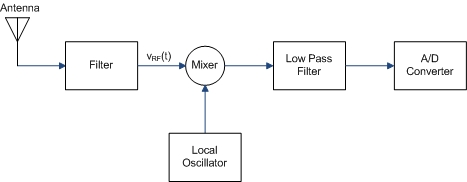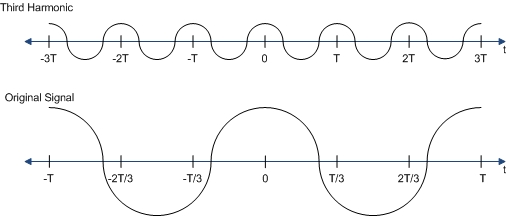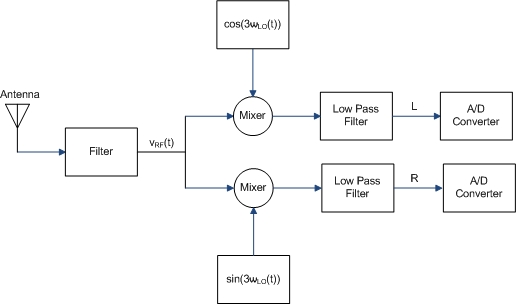Third harmonic sampling and QSD - HW9
Max Woesner
Homework #9 - Third harmonic sampling and QSD
This page describes how third harmonic sampling and a QSD (quadrature sampling detector) work.
References:
SoftRock-40 SDR interest group
FlexRadio SDR-1000 QEX articles
Third Harmonic Sampling
Third harmonic sampling is used in some applications, such as the SoftRock-40 software defined radio, to divide the local oscillator frequency by three.
Consider the simple representation of part of a software defined radio below.

The local oscillator can be defined as , giving us a square wave. Note
The output voltage of the radio, or is
Now can be written as the series
We are interested in the third harmonic term, or
This frequency is three times that of . Note that the amplitude and period decrease by a factor of three.

We can use the third harmonic to drive the mixer in the radio at a frequency three time that of the local oscillator.
The advantage of using the third harmonic rather than using a higher speed oscillator is that it costs less to buy both a lower frequency oscillator as well as the parts that are driven by the oscillator.
The disadvantage is that there is some loss in the signal when the third harmonic is used, specifically
We can now apply the same concept to a radio with a doubly balanced mixer. The radio could be represented such as in the diagram below.

We could use a mixer like this one.
